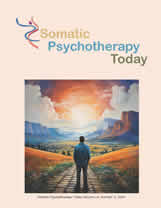In Utero: A New Documentary Brings Educational Opportunities
In Utero is intended to help prevent some of the negative imprints and trauma that ensue through personal and professional ignorance. It does not delve into the known and applied modalities for addressing and healing trauma that occurs between conception and birth. It is essential for all of us to understand that, yes, we want to focus on the importance of this primal or primary period, and, if that time was not ideal, it does not have to be a life sentence. Current research is demonstrating that healing can occur at any time.
GenPax: Birth Matters
It is no longer acceptable for the more than 20 organizations dedicated to pre and perinatal life to operate as singular entities. We must band together and collaborate, we must aggregate our collective power to change the behaviors of the medical maternity community. If we are to successfully move the needle from traumatic birth – as a daily practice of U.S. hospitals – to a peaceful birth culture, we must form a unified front.
Our Winter 2017 issue is coming soon.
Our Winter 2017 issue will be online one week from today. We're pleased to share articles and reviews, author reflections and ways to make professional connections. John Chamberlain writes about GenPax and why birth matters. Kate White discusses early trauma and ways to heal its impact while she and Ray Castellino share Womb Surround as another healing process. Erik Jarlnaes offers an intimate look into his rebirthing process and Sharon King discusses the need for a new birthing paradigm. Be sure to follow us on Facebook for daily excerpts of what's to come.
The Neuroscience of Pain:
The central nervous system plays a critical role in the association between psychological factors and pain. The neural circuits that are involved in these bi-directional relationships include several systems that influence peripheral processes relevant to pain perception. It is possible that transient psychosocial factors as well as long-term consequences of developmental trajectories adversely affect these neurobehavioral pathways. Exploring the neuroscience of the biobehavioral and developmental mechanisms of pain is the goal of the upcoming Special Issue of Psychosomatic Medicine.
Leading from the Heart
I grew up believing I was alive because other people needed me, because I played a significant role in their lives. And in truth, my choice to become a therapist was a choice to be at service for others.
But, does the choice to open, to touch and be touched, to share our heart and our time with others have to come at the expense of our lives?
Gentle Comfort During Difficult Times
“These are difficult times.” One member noted during my mid-November stress management group. “Everyone is angry. People who used to be friends are not speaking. It’s giving me stomach aches.”
“I know!” Her couch mate said with sadness in her voice. “There are too many changes. I’m having migraines.”
Group members discussed their usual stressors—interpersonal conflicts, worries about children and grandchildren, work stress, a few health concerns—but on that fall morning I sensed a difference in their presence and in each person’s felt sense of his/her stress.
“Maybe it would help to talk about it,” said a group member settled in the rocking chair. “In times like these we all need support.”










